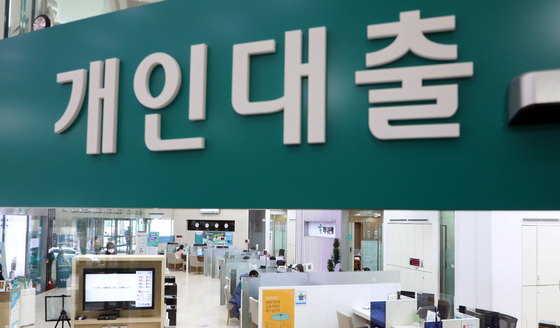
In the first quarter of this year, domestic banks are expected to raise the lending threshold, centering on general household loans (credit loans) and SMEs. yunhap news
In the first quarter of this year, domestic banks are expected to raise the loan threshold, mainly for households (credit loans) and SMEs. The rise in household debt has increased household credit risk and increased concerns about the government’s tightening regulations. In addition, concerns that the prolonged new coronavirus infection (Corona 19) will increase domestic and international economic uncertainty and worsen the performance of SMEs.
According to the “financial institution loan behavior survey results” released by the Bank of Korea on the 13th, the overall attitude toward lending by domestic banks is expected to be slightly strengthened (-8 points), centered on households and SMEs. In particular, it is expected that the threshold of credit loans will increase as borrowers’ attitudes toward general household loans are strengthened (-12 points). Household housing loans (-6 points) and SME loans (-6 points) are also expected to become difficult as loan attitudes are slightly strengthened.
Household credit loans tightened for two consecutive quarters

According to the’financial institution loan behavior survey results’ released by the Bank of Korea on the 13th, the overall lending attitude of domestic banks is expected to be slightly strengthened (-8 points), centered on households and SMEs. Bank of Korea
Banknotes are expected to tighten general household loans for two consecutive quarters following the fourth quarter of last year. There is a prospect that a lending cliff could come. Initially, as loan demand increased due to the influence of ultra-low interest rates, each bank increased general loans, but as household debt increased and government regulations were tightened, banks’ lending attitudes in the fourth quarter of last year turned to’strengthening’.
In fact, as household debts have increased since last year, voices of concern about poor loans are growing, mainly among vulnerable borrowers such as low credit and low income groups. According to the’Financial Stability Report’ submitted by the Bank of Korea in December of last year to the National Assembly, household debt has exceeded the scale of gross domestic product (GDP) for the first time ever. Accordingly, at the end of last year, commercial banks temporarily stopped mortgage loans, jeonse loans, and even credit loans.
In addition, as the government pulls out a knife to manage the total amount of household loans, it is expected that banknote loans will become more difficult. As households’ “debt investment” movement grew, the Financial Services Commission held a meeting of the Financial Risk Response Group on the 12th and said, “Reinforcing the special management of the banking sector for large credit loans that have recently increased, especially those that are difficult to see as emergency life and business funds. He threw a warning message saying, “I ask for it.”
Prior to this, in November of last year, the Financial Services Commission announced the’Household Loan Management Plan such as Credit Loans’ and strengthened regulations on the size and use of credit loans for high-income families with annual incomes exceeding 80 million won.
SME loans are also’black’ due to the uncertainty of Corona 19

In the expectation that the sales of industries vulnerable to Corona 19, such as the domestic aviation and travel industries, will continue sluggish, banks’ SME loans are also expected to be tight. yunhap news
Lending to SMEs is also expected to increase, following last quarter. The banking sector has shown a lending easing attitude for the past seven consecutive quarters (1st quarter of 2019 to 3rd quarter of 2020), but turned to a’strengthening’ attitude of lending as they judged that their credit risk increased as the real economy continued to slow.
In addition, as the spread of Corona 19 continued, uncertainty in the domestic and foreign economic conditions was also large. This is because the sales of industries vulnerable to Corona 19, such as domestic aviation and travel, are expected to continue sluggish. As the economic slowdown continues, the banking sector expects that there is a high possibility that SMEs’ credit soundness will decrease overall due to extended loan maturity and delayed repayment of principal and interest.
The loan threshold is higher… Demand is’expected to increase’
Contrary to the rising loan threshold, loan demand for households and businesses is expected to increase at the same time. In particular, households are expected to see an increase in demand centered on general loans as demand for housing purchases and jeonse funds and financial investment such as stocks increase.
It is expected that corporate loan demand will also increase due to the spread of Corona 19. As economic activity declines, the economy continues to slump, and sales of small and medium-sized businesses and small business owners decrease due to the strengthening of COVID-19 distance, and the demand to accumulate business operation costs and extra funds is expected to increase.
Reporter Yoon Sang-eon [email protected]
